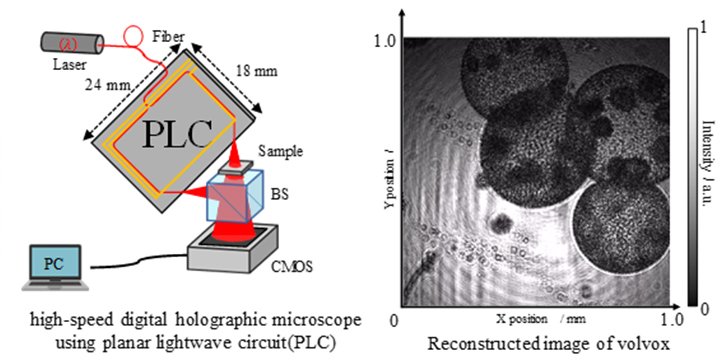December 2021 Issue
Topics
Fascination with digital holograms and their applications for imaging through semi-opaque materials
Eriko Watanabe,
Associate Professor, Department of Engineering Science, UEC Tokyo.
“My interest in light and optics was triggered when I saw an exhibition on holography at an event on campus during my undergraduate days at university,” says Eriko Watanabe, an associate professor at the Department of Engineering Science, UEC Tokyo. “I was intrigued by the amazing three dimensional optical structures that could be produced by the interference of light waves. This fascination with holograms is the basis for my current research.”
Recent research being conducted by members of the Watanabe Group includes digital holography imaging of objects hidden by media such as scatter plates and biological tissues. “The ultimate goal is to develop technology for the non-invasive imaging of living cells inside biological tissues,” explains Watanabe. “We expect our research will play an important role in clarifying biological mechanisms governing human health on the cellular level.” Other potential applications of this technology include imaging through fog and air turbulence, where the latter is important for land-based astronomy where movements of the air can adversely affect astrophotography.
Specific scientific issues to resolve to achieve these goals are (1) elimination of temporally fluctuating spatial noise due to complex fluctuations and scatterers to capture images behind obtrusive objects, and (2) development of microscopic imaging technology for visualizing below living skin.
One solution proposed by the Watanabe Group is using deep neural networks to suppress temporally fluctuating spatial noise and applying optical correlation imaging. “Our imaging method combines deep learning with optical correlation imaging that accelerates ordinary single pixel imaging by the use of optical computing,” explains Watanabe. “Furthermore, we are imaging behind scattering media by phase shift digital holography using near-point light sources with planar waveguides. Using a near-point light source eliminates fluctuations with common optical path digital holography and planar waveguides take us closer towards ‘needle-type’ probe structures.”
Recent results
Contributing to society
“I worked on the development of holographic memories during the early days of my career,” says Watanabe. “The applications included storing music and video for the entertainment business. During this research I realized that the digital entertainment sector was being overwhelmed with pirated versions of songs and videos; clear copyright infringement. So I decided to partner with prominent groups in the entertainment business to bring these issues to the notice of the general public by organizing UEC accredited courses on these topics. It’s been a highly successful way of educating people about copyright issues with the goal of eliminating such behavior.” Examples of Watanabe’s activities include collaborating with the Music Publishers Association of Japan and Recording Industry Association of Japan on arranging a series of special lectures themes such as ‘Entertainment Business and Copyright in the era of AI’; and ‘Game Industry’.
Syllabus of the course on “Special Lecture on Informatics and Engineering B :
Copyright and creative business (In Japanese only)
References
Further information




